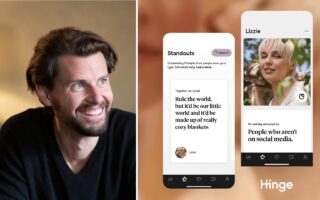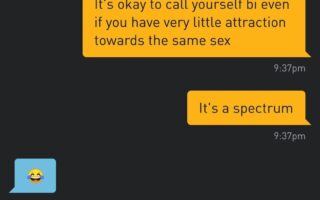In an ever-evolving digital landscape, where connection and community often reign supreme, a unique genre of applications has emerged, catering specifically to the LGBTQ+ community: the “gayapps.” These platforms serve as vibrant virtual spaces, breaking down barriers and fostering connections among individuals who share similar identities and experiences. Whether you seek love, friendship, support, or simply a safe space to express yourself, gayapps have transformed the way people navigate the complexities of modern relationships and self-discovery. In this article, we will explore the multifaceted world of gayapps, examining their impact on social interactions within the LGBTQ+ community, the innovations they bring to the digital realm, and the ongoing dialogue surrounding inclusivity and representation in the tech landscape.
Table of Contents
- Exploring the Landscape of Gay Apps: A Comprehensive Overview
- Navigating Safety and Privacy: Essential Considerations for Users
- Building Connections: Tips for Effective Communication on Gay Apps
- Beyond Dating: Discovering Community-Building and Support Features
- Q&A
- Insights and Conclusions
Exploring the Landscape of Gay Apps: A Comprehensive Overview
The realm of digital connectivity has profoundly transformed the way individuals engage with one another, particularly within the LGBTQ+ community. With a plethora of apps catering specifically to gay men and the broader spectrum of queer identities, users now have a diverse array of options at their fingertips. These applications range significantly in purpose, offering everything from casual dating to more serious relationships, friendship-building, and networking opportunities. Popular choices include Grindr, known for its geolocation-based matching, while others like Tinder and OkCupid have adopted more inclusive approaches, allowing users to express their identities beyond traditional norms.
As these apps continue to evolve, understanding their distinct features can aid users in finding the most suitable platforms for their needs. Here’s a brief comparison of some leading gay apps:
| App Name | Purpose | Key Features |
|---|---|---|
| Grindr | Dating/Hookup |
|
| Tinder | Dating |
|
| OkCupid | Dating |
|
Beyond dating, some apps focus on building friendships, such as HER, which doubles as a social networking platform for LGBTQ+ women and non-binary people. Meanwhile, platforms like Bear World cater to specific communities, offering a unique space for users to connect based on shared interests and identities. The ongoing development of these applications not only highlights the need for connection among gay individuals but also reflects a broader cultural shift towards embracing diverse experiences in the digital landscape.
Navigating Safety and Privacy: Essential Considerations for Users
In the digital age, engaging with apps designed for the LGBTQ+ community necessitates a balanced approach to safety and privacy. Users should be proactive in understanding the risks associated with sharing personal information. Consider the following guidelines to enhance your security while enjoying these platforms:
- Limit personal disclosures: Avoid sharing sensitive details such as full names, addresses, or location data.
- Review privacy settings: Familiarize yourself with the app’s privacy features and adjust them according to your comfort level.
- Verify profiles: Engage with users who have verified profiles or engage through mutual connections.
- Maintain anonymity: Use usernames or pseudonyms instead of real names for added privacy.
When assessing the safety features of an app, it’s also prudent to review its data handling practices. Check for the following attributes that indicate a commitment to user privacy:
| Feature | Description |
|---|---|
| End-to-end encryption | Secures messages so only the sender and receiver can read them. |
| Data retention policies | Clearly states how long user data is stored and why. |
| User reporting tools | Allows users to report abusive behavior effectively. |
| Transparent terms of service | Provides an easily understandable agreement regarding data usage. |
Building Connections: Tips for Effective Communication on Gay Apps
Creating meaningful connections on gay apps goes beyond just swiping and sending messages. To foster genuine conversations, it’s essential to be clear and authentic in your communication. Here are some tips to enhance your interactions:
- Be Open and Honest: Share your interests and what you’re looking for. Transparency breeds trust.
- Use Humor Wisely: A well-placed joke can break the ice but ensure it’s appropriate and considerate.
- Ask Open-Ended Questions: This encourages dialogue and allows others to share more about themselves.
- Respect Boundaries: If someone isn’t interested, gracefully move on. There are plenty of connections waiting to be made.
Additionally, navigating communication on these platforms often requires understanding the nuances of digital interactions. Recognizing how to express yourself through text can significantly impact your experience. Below is a simple comparison of effective and ineffective communication styles:
| Effective Communication | Ineffective Communication |
|---|---|
| Engaging and Personal: Using someone’s name and referencing past chats. | Generic and Impersonal: Copy-pasting messages without tailoring them. |
| Expressive and Clear: Sharing thoughts and feelings candidly. | Ambiguous: Using vague language that leaves room for misinterpretation. |
| Positive and Encouraging: Complimenting or acknowledging the other person. | Negative or Critical: Focusing on faults or shortcomings. |
Beyond Dating: Discovering Community-Building and Support Features
While meeting potential partners often steals the spotlight in many apps, a growing number of platforms prioritize community-building and support. These features not only enhance user experience but also foster a sense of belonging among individuals. Some noteworthy elements include:
- Discussion Forums: Accessible spaces for users to share experiences, seek advice, and connect over shared interests.
- Support Groups: Featuring dedicated areas where members can find emotional support, particularly for those facing challenges related to identity, mental health, or relationships.
- Event Listings: Highlighting local gatherings, workshops, and social outings encourages users to meet offline and strengthen community ties.
Moreover, community-focused apps often incorporate features such as peer-led initiatives, mentorship programs, and volunteer opportunities. These can provide invaluable connections and aid in personal growth. Here’s a quick overview of how different platforms approach these aspects:
| App Name | Community Features | Support Options |
|---|---|---|
| Grindr | Forums and Group Chats | Health Resources and Hotlines |
| Her | Events and Social Groups | Peer Support and Wellness Tips |
| Blume | Creative Collaborations and Chats | Mentorship and Counseling Links |
Q&A
Q: What are “gay apps”?
A: Gay apps are mobile applications specifically designed to cater to the LGBTQ+ community, providing users with platforms for dating, socializing, and connecting with others who share similar experiences and interests. These apps range from those focused solely on romantic connections to those that foster friendship and support networks.
Q: How did gay apps come to prominence?
A: The rise of gay apps can be traced back to the increasing acceptance of LGBTQ+ individuals and the broader use of smartphones. As technology advanced and social norms evolved, the demand for safe, inclusive, and convenient spaces for queer interactions grew, leading to the development of dedicated platforms.
Q: What features do these apps commonly offer?
A: Many gay apps include features such as user profiles, chat functions, location-based searches, and filtering options to find potential matches based on interests, preferences, and lifestyles. Some also incorporate elements of community engagement, such as forums or event listings, enhancing social connections beyond dating.
Q: Are there any popular gay apps that people should know about?
A: Absolutely! Some of the most well-known gay apps include Grindr, which focuses on location-based dating; Bumble, which encourages women to initiate conversations; and OkCupid, known for its extensive questionnaires and LGBTQ-inclusive options. Each app serves different community needs based on user preferences.
Q: How do gay apps address safety concerns?
A: Safety is a priority for many gay apps. Most platforms implement features such as profile verification, options to block or report users, and privacy settings that allow members to control who can see their information. Additionally, educational resources on safe dating practices are often provided within the app.
Q: Do gay apps cater to different segments within the LGBTQ+ community?
A: Yes! Many gay apps specifically target various segments within the community, including bisexual, transgender, non-binary, and queer individuals. Some apps, like HER, focus on queer women and non-binary individuals, while others may emphasize inclusivity for all sexual orientations and gender identities.
Q: How do these apps help foster community?
A: Gay apps not only facilitate romantic connections but also help build community by enabling users to interact with others who share similar experiences. Through chat rooms, forums, or event features, these platforms can create spaces for support, advice, and social activities, helping users feel less isolated.
Q: Are there any downsides to using gay apps?
A: As with any platform, there are potential downsides. These can include issues related to superficial connections, harassment, and privacy concerns. Not all users may have positive experiences, so it’s essential for individuals to remain vigilant about their safety and well-being when engaging with these apps.
Q: What does the future hold for gay apps?
A: The future of gay apps looks promising, with advancements in technology and ongoing societal progress toward inclusivity. We can expect continued innovation, such as enhanced security features, personalized matching algorithms, and greater emphasis on promoting mental health resources, ultimately creating more supportive and fulfilling environments for LGBTQ+ users.
Insights and Conclusions
As we conclude our exploration of gay apps, it becomes clear that these digital platforms are more than just tools for connection; they are vibrant ecosystems fostering relationships, community, and self-discovery. From dating and friendships to advocacy and support, these apps cater to a diverse spectrum of experiences and identities. They empower users to navigate their social landscapes with authenticity and confidence.
In a world that is continuously evolving, the importance of these apps cannot be overstated. They not only provide a space for LGBTQ+ individuals to meet and connect but also serve as an avenue for education, awareness, and representation. As technology advances and societal norms shift, the role of gay apps will undoubtedly continue to adapt, reflecting the needs and desires of the communities they serve.
So whether you’re seeking love, friendship, or simply a sense of belonging, these digital spaces hold the potential to enrich your journey. Embrace the possibilities and remember that every swipe or message could lead to a connection that changes your narrative—one conversation at a time. In this ever-expanding world of digital companionship, the choice is yours to make, and the adventure is just beginning.



